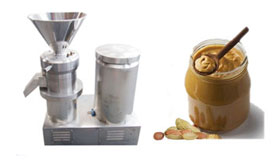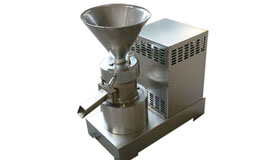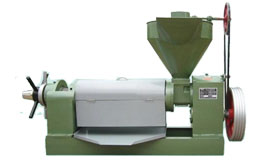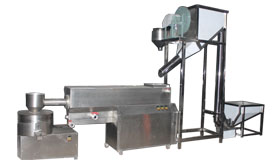The mechanization technology of peanut production includes mechanical ploughing, mechanical mulching, mechanical sowing, mechanical plant protection, mechanical harvesting and other processing techniques, such as peanut shelling and oil pressing. Sowing and harvesting are the core content. The mechanization degree of ploughing and peanut shelling are higher. While the planting and harvesting of peanuts are still semi-mechanized, and the seeding machinery has hand and tractor traction type and hand seeder is used mostly. The peanut harvesting machine includes the peanut digger, peanut gleaning machine and peanut picker.
Preparation before sowing
1. Selection of varieties
According to local conditions of production and provenance, choose high quality, high yield, strong resistance vertical lodging resistance varieties with concentrated bearing, shallow depth of fruits, long optimum harvesting time, less fruit dropping regular shape and suitable for mechanized production.
2. Soil conditions and plot selection
Soil conditions require good physical and chemical properties, loose soil and deep soil. The plot is neat with flat terrain, linked pieces of conserved lands, good irrigation and drainage condition, suitable for mechanized production.
3. Soil tillage
For spring planting peanuts, mechanical tillage should be timely after harvesting the preceding crop. Generally, the ploughing depth is 22-25cm, consistent without omitted ploughing and the coverage should be tight. On the basis of winter ploughing, make intensive soil preparation to ensure the surface of the soil loose, level and solid, and pick out the stone and debris larger than 5cm. Before summer seeding of peanuts, make soil preparation timely after harvesting the preceding crop to make the soil loose without stubble.
Base fertilization and soil treatment can be proceeded with soil tillage.
4. Seed preparation
The seed size should be uniform with purity of more than 96%, cleanness of more than 99 % and germination rate of over 95%. Before sowing, choose appropriate seed coating according to the requirements of agronomy, then peanut seed coating (seed dressing) processing should be made and guarantee unobstructed seeding after processing. Mechanization planting experiment should be carried out as needed.
5. Mulch selection
High quality mulching film with appropriate width, no damage and high tensile strength should be used. Mulch with the width of 800 ~ 900mm and thickness of not less than 0.008mm are advisable. 100% of elongation (vertical/horizontal) and good extensibility are required for mechanized mulching and recovery.

Sowing
1. Sowing date selection
Peanut sowing date should combine with the local natural conditions, cultivation system and variety characteristics. Fully consider the ground temperature, soil moisture, plant varieties, soil conditions and cultivation methods to determine the date flexibly. Five days before sowing, the average ground temperature of 5cm should be above 15℃ and pay attention to avoid the rainy season when harvesting. Insist on sowing with enough moisture. The moisture content of soil layer of 5 ~ 10cm should not less than 15% when sowing. If the soil moisture is insufficient, it should be watered in advance.
2. Seeding
(1) The depth of seeding. It should be determined by the soil moisture, soil property and air temperature. The general mechanical seeding is about 5cm. It can be a little deeper for silty loam and poor soil moisture plots, but not deeper than 7cm; sowing of plot with heavy soil and proper moisture content can be appropriately shallow, but not shallow than 3cm.
(2) The seeding density. Peanut mechanical seeding method is hole sowing. 8000 ~ 10000 holes for big peanut and 10000 ~ 12000 holes for little peanut per mu is advisable with two kernels in each hole. In general, the sowing density is smaller for early sowing with high soil fertility, more rain and high underground water level or middle-late season varieties; the sowing density should be large for places with late sowing, barren soil, less rainfall in the middle and later periods, dry climate, no water conditions or early maturity varieties.
3. Sowing requirements.
Generally, two rows in one ridge (mulching) and flat planting are adopted in peanut sowing.
(1) Two rows in one ridge. The ridge distance is controlled in 80 ~ 90 cm, small line spacing on ridges is 28 ~ 33cm, ridge height is 10 ~ 12cm and hole spacing is 14 ~ 20cm. The ridge distance, ridge surface width and seed spacing of the same area should be consistent as far as possible. The thickness of mulching planting seedlings with covering should reach 4 ~ 5cm for automatic rupture of mulch and come out of peanut seedling.
Two row in one ridge (mulching) high ridge planting is suitable for waterlogged land with ridge height of 15 ~ 20cm high for mechanization standard sowing and harvesting.
(2) Flat planting. Equal row flat planting should be changed to wide and narrow row spacing sowing for mechanized harvesting. Wide spacing is 45 ~ 55cm and narrow spacing is 25 ~ 30cm. On the choice of seeding machine, combined harvester with the function of fertilizing, seeding and rolling should be used. For summer sowing peanuts, straw mulching stubble cleaning peanut no-till planter can be used for sowing.
(3) Sowing operation quality requirements. Mechanical sowing requires double grain rate of over 75%, qualified rate of seeds per hole over 95%, rate of empty seed not greater than 2% and broken rate of less than 1.5%. The selected film width should be suitable for the width of machine. Straighten and tension the film as far as possible when operating and covering fully, and put down the press wheels for pressing at the same time to press the film on the ground closely.
The field management
1. Intertillage fertilization
Intertillage topdressing should be completed before early flowering season. Cultivator machine with fertilizer device can be used for tillage weeding, ridging and deep top application process.
2. Prevention and control of plant diseases and insect pests
Choose appropriate pesticide and applying time according to the forecast of plant protection department. In terms of choice of plant protection machinery, motor sprayer, knapsack sprayer-duster, electric sprayer, agricultural aviation plant protection machinery can be used. Plant protection mechanization operation should comply with the requirements of sprayer operation quality and pesticide application technical specification.
3. Chemical control regulation, excessive growth and lodging prevention.
Chemical agent should be used in plot with excessive growth trend and plant height of more than 35cm from full blooming to fruiting period of peanuts to prevent excessive growth and lodging. Spraying equipment should choose hydraulic atomized spray method. If use half feeding peanut combined harvester, it should also ensure that the peanut seedling upright to harvest time.
4. Irrigation and drainage
Irrigate timely in dry and no rainfall peanut growing period; if there is excessive accumulated water in the field, it should be drained timely to prevent waterlogging and rotten of fruit, ensure the production and quality.
4. Harvesting
1. Harvesting time
Generally, when peanut plant senescence, the top stops growing, the upper leaves and stem get yellow, most pods shell get hardening and thinning, and seeds present variety characteristics, then it can be harvested. Stay away from the rainy season when harvesting.

2. Harvesting conditions
When the moisture content of soil is 10% ~ 18% and the soil is loose when rubbing by hand, it is suitable for peanut harvesting. If the moisture content of soil is too high, mechanization harvesting can not proceed; When the moisture content is too low and the soil is hardening, the soil can be properly irrigated to adjust the moisture content of soil.
3. Harvesting approach
Proper mechanized harvesting method and corresponding harvesting machinery should be used according to local soil conditions, economic conditions and planting patterns.
(1) The sectional harvest. It is suggested to use the peanut harvester for excavating, shaking the earth and laying, collecting picker for picking with manual collecting and mechanical cleaning. On hilly sloping land, peanut excavator can be used for digging with artificial collecting and mechanical cleaning.
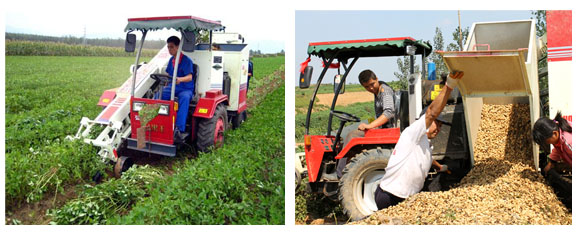
Operating quality requirements of peanut harvester: total loss rate below 5%, buried fruit rate below 2%, qualified rate of digging depth above 98%, broken fruit rate below 1%, clay content below 2%; no oil pollution, the surface is flat after operation, no omitting, no crop rolling, no leakage of pod.
Operating quality requirements of peanut excavator: the digging depth of more than 98% pass rate, broken rate below 1%, no oil pollution, the surface is flat after operation, no omitting, no crop rolling, no leakage of pod.
(2) Combined harvest. Combined harvester is used for peanut digging, transporting, soil cleaning, fruit picking, cleaning and collection. The combined harvester used should be matching with the seeding machine.
Operating quality requirements of half feed combined harvester: the total loss rate below 3.5%, broken rate below 1%, unpicking rate below 1%, crack pod rate below 1.5%, impurity rate below 3%; no oil pollution, the surface is flat after operation, no omitting, no crop rolling, no leakage of pod.
(3) Operating quality requirements of full feeding combined harvester: the total loss rate below 5.5%, broken rate below 2%, unpicking rate below 2%, crack pod rate below 2.5%, impurity rate below 5%; no oil pollution, the surface is flat after operation, no omitting, no crop rolling, no leakage of pod.
(4) Peanut vine treatment
Peanut vines should be laying orderly after harvesting by half feed combined harvester for mechanized collecting and recycling. Peanut vines should also be laying orderly after harvesting of full feed combined harvester for mechanized collecting and recycling if used as fodder. If the field is to be replanted, it should be finely chopped and spread on the surface.
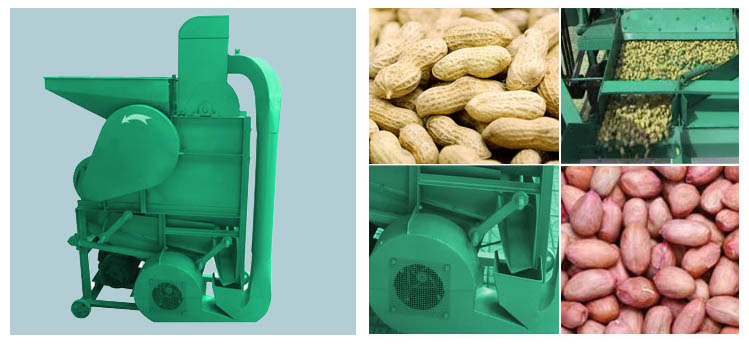
In mechanical shelling process, choose appropriate mesh according to the size of peanut variety , reasonably adjust the working clearance of the roller and gravure screen of peanut shelling machine, and pay attention to avoid excessive feeding amount and prevent peanut kernels staying in the machine for too long and too large extrusion intensity, which may resulting in damage. When shelling, the peanuts should not be too wet or too dry. If the peanuts are too wet, it would reduce the efficiency, while peanuts of too dry are fragile. When shelling in winter, if the moisture content of peanuts is less than 6%, it should be sprayed with warm water evenly and covering about 10 hours with plastic film, and then drying in the sunlight for an hour or so. In other seasons, it should be covered with plastic film for about 6 hours. The shelling rate of mechanical shelling is required to be more than 98% with the breakage rate of not more than 5%, the cleanliness of above 98%, and the loss rate of no more than 0.2%.





